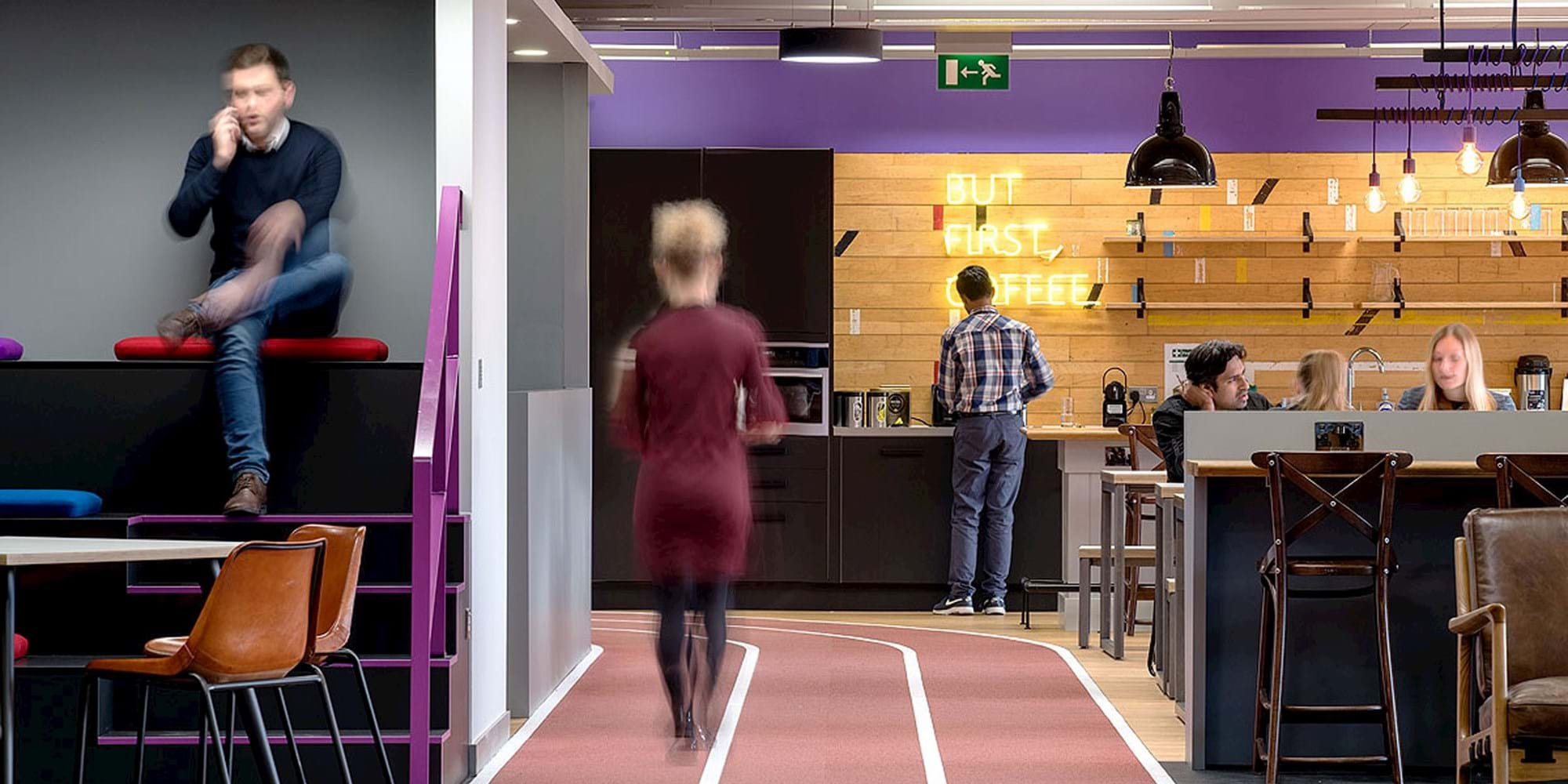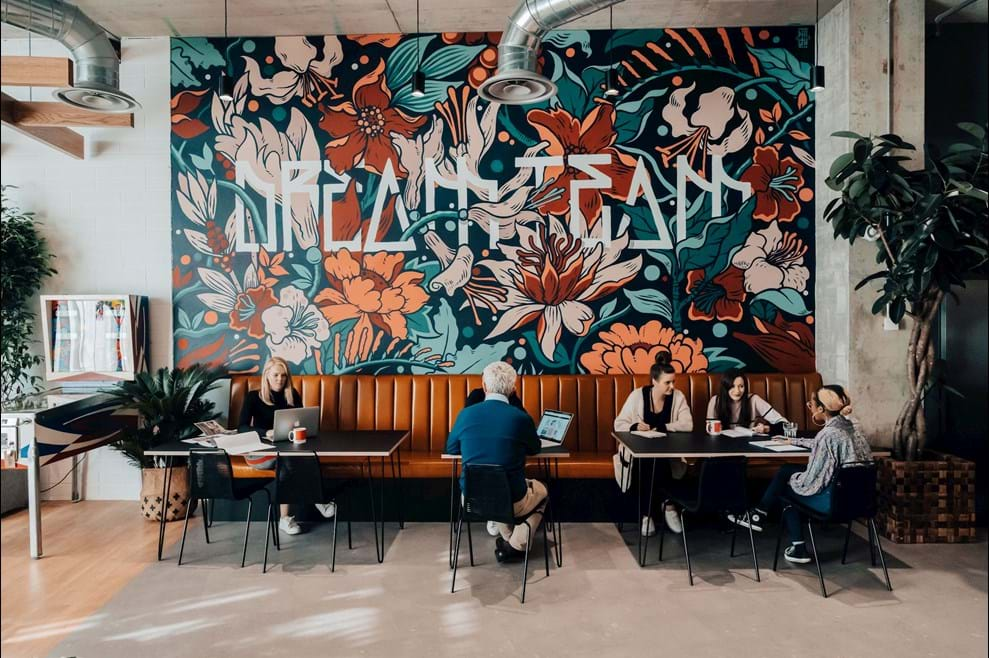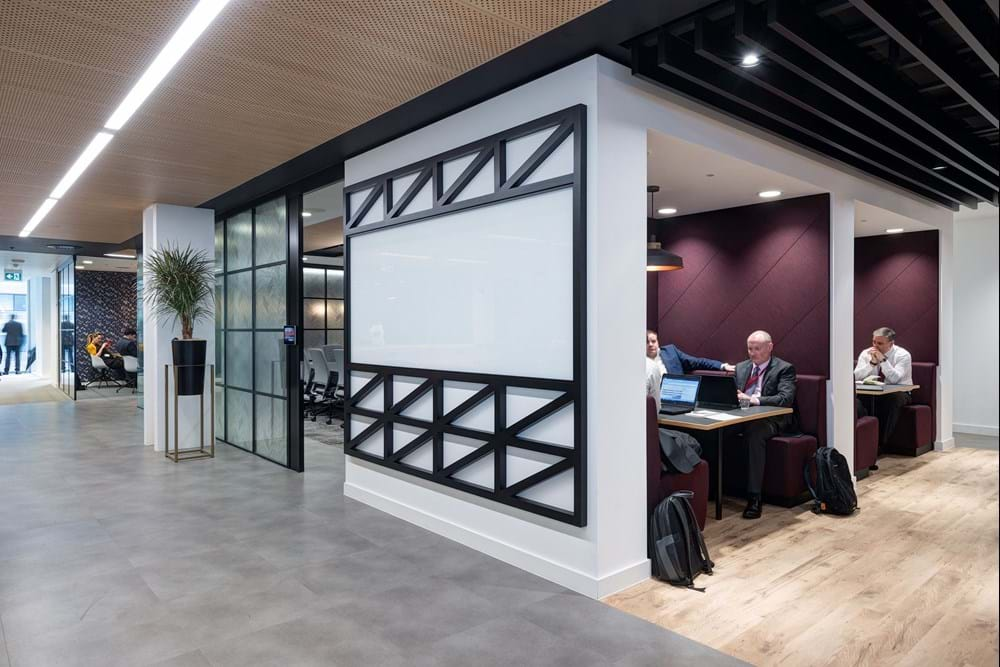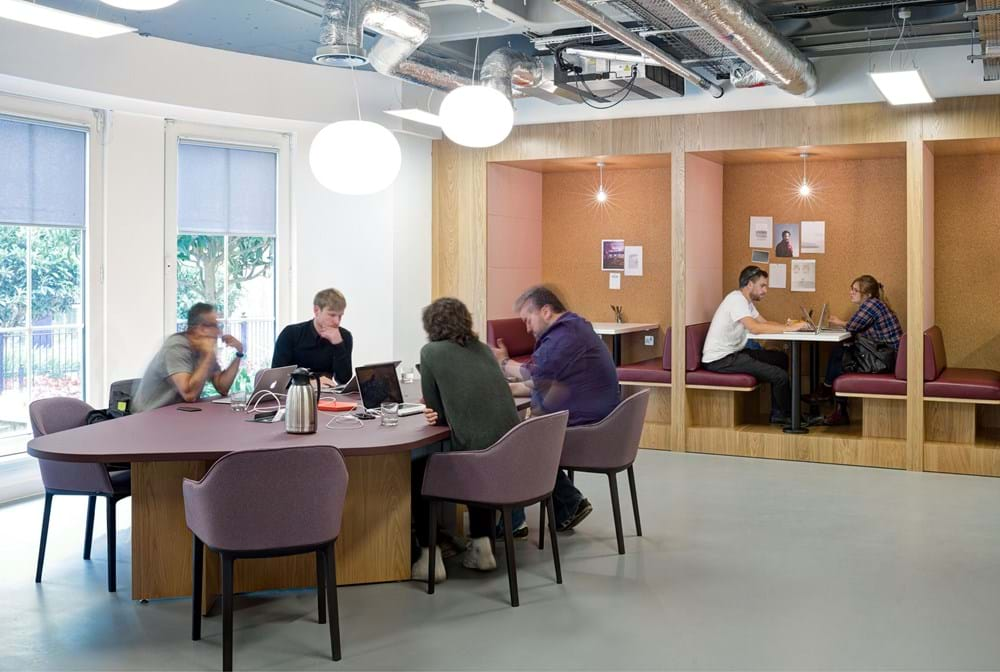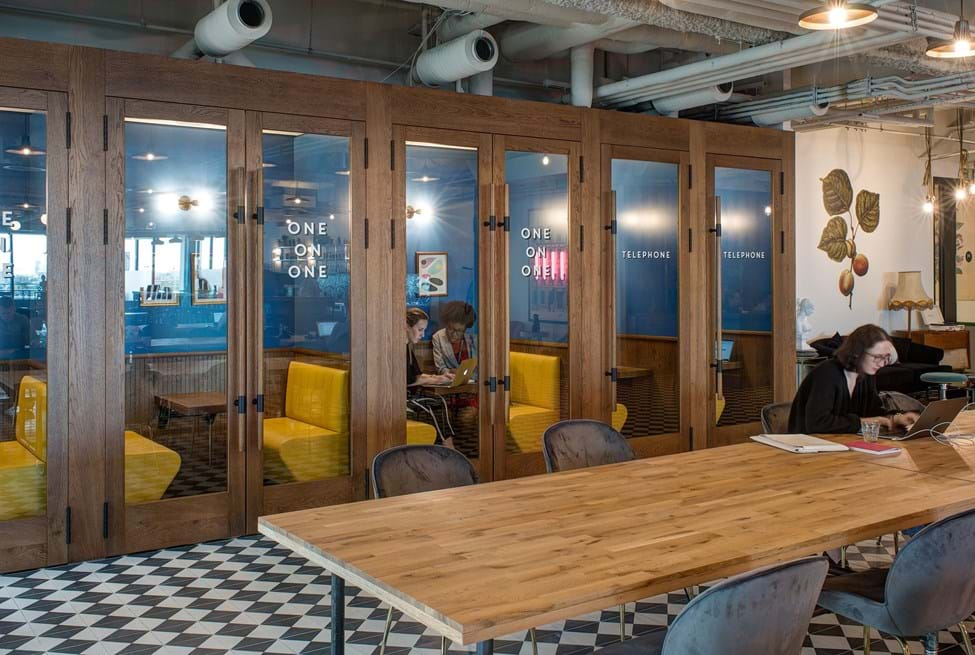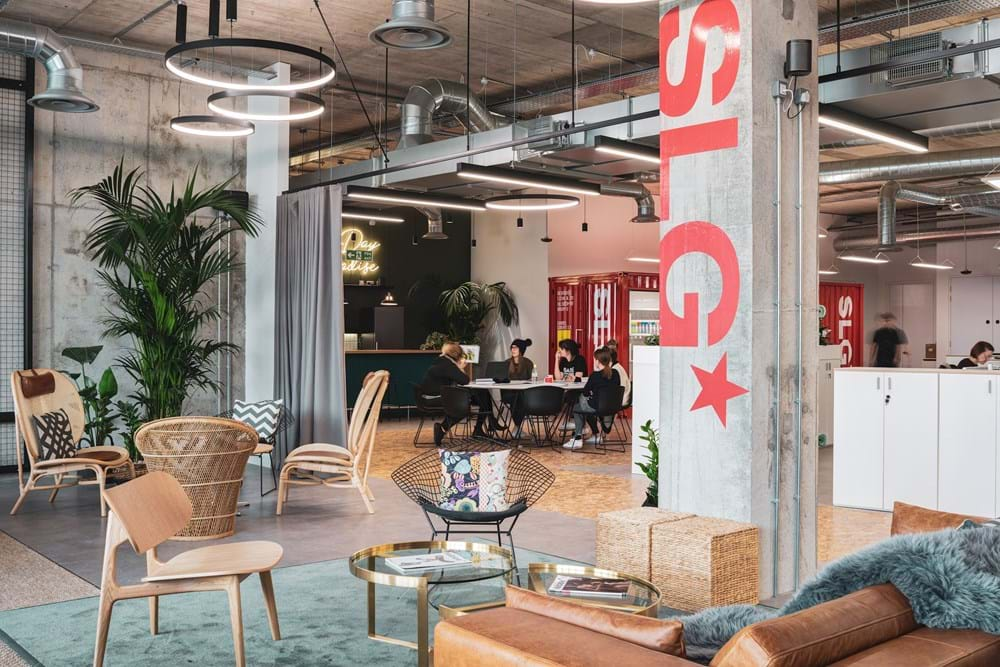Why Intergenerational Office Design Matters and How to Get it Right
The 5G workforce is here! But despite its name, it has nothing to do with wireless technology. The 5G workforce is one where five generations of workers exist alongside each other in the workplace.
The 5G workforce is here! But despite its name, it has nothing to do with wireless technology. The 5G workforce is one where five generations of workers exist alongside each other in the workplace.
Thanks to better health and changes in pensions, people are working longer. Today, the older generations – known as the silent generation, traditionalists and baby boomers – are accompanied by generation X, Y (millennials) and Z in the office.
Creative mural at one of SLG's workspaces
With such a wide range in age and lifestyle, managers are increasingly looking for ways to redesign the workplace to appeal to the entire multigenerational workforce. Why? Because multigenerational teams work better together in the modern workplace.
But what does this mean for workplace design? Are there commonalities between the age groups that can help with employee engagement, employee retention and workplace wellbeing for all?
One size fits all doesn’t work in workspace design
A 2019 report from Chargifi found that companies with a one-size-fits-all approach to workplace design are failing to meet the needs and expectations of an intergenerational workforce.
Working with different generations in the workplace clearly needs a new approach to office design.
In finding a workable solution, it’s important to assess how different generations work together and individually:
Baby boomer workstyles
Office meeting booths at Mitie's office in the Shard, London
Baby boomers are said to be more goal oriented, and many have become used to routines through years of working in senior positions for the same company. This may make them more resistent to change, which is important to consider when redesigning the workspace for an office fit out.
Boomers may have come from a background of cubicles and private offices, but it’s likely they now find themselves in open plan environments and agile offices, which may not work to their strengths. This generation commonly prefers the workplace to look like a workplace – not a home, café or recreation space. However, they are comfortable with interaction and collaboration.
Generation X workstyles
Employees at work in Spaces' office in Brighton
Generation Xers often have families and appreciate being able to balance work and home life. Flexible working appeals to this group, as does flexibility within the modern office. Those within this age group like to be able to get their heads down but also socialise with the other generations – albeit on their terms.
For more inspirational images, take a look at our Case Studies.
Millennial workstyles
The ideal millennial workspace: Mindspace in Appold Street, London
Generation Y, aka the millennials, embrace remote working and take full advantage of technology that allows work from anywhere – either around the workplace or outside of it. Millennials at work seek flexibility in all its forms.
They also appreciate health, wellbeing and wellness features more than most, such as natural light, sustainability initiatives, biophilic features and outdoor spaces.
However, adding a few plants, outside seating and big windows won’t guarantee the loyalty of millennials. Research by Deloitte found that 43 percent of people within this group plan to leave their job within two years. Engaging millennials in the workplace is therefore a major concern for employers looking to retain talent within this age group.
For more interesting insights, take a look at our blogs.
Generation Z workstyles
The ultimate modern workplace: SLG in Cheltenham
The tastes of the youngest group, Generation Z, are still relatively unknown. However, as a group that has grown up with technology, it’s expected that they will follow similar preferences to millennials.
Where does this leave employers when designing for multiple age groups and future generations?
The ideal solution is to create multiple work environments that allow workers to choose a place to work that best suits their needs. This has the added benefit of moving the organisation towards agile, activity-based working styles, too.
By incorporating a mix of quiet concentration zones, collaborative spaces, break-out areas, meeting rooms and wellness spaces, you can cater to the needs of differing age groups, job types and personalities.
Variety is essential – but isn’t always easy to achieve or afford. This is why modular furniture, flexible workstations and moveable walls offer the ideal solution. These multi-functional space dividers and pieces of furniture can create spaces, seating, work surfaces and zones without creating fixed environments.
In the modern workplace, we need adapbility and flexibility to cater across a multi-generational workforce.
Are You Thinking About a Workspace Refurbishment?
With nearly 30 years' experience, Modus has built a reputation as London's leading office design and build company. To discuss your project with a friendly member of our team, click though to our contact page here.
